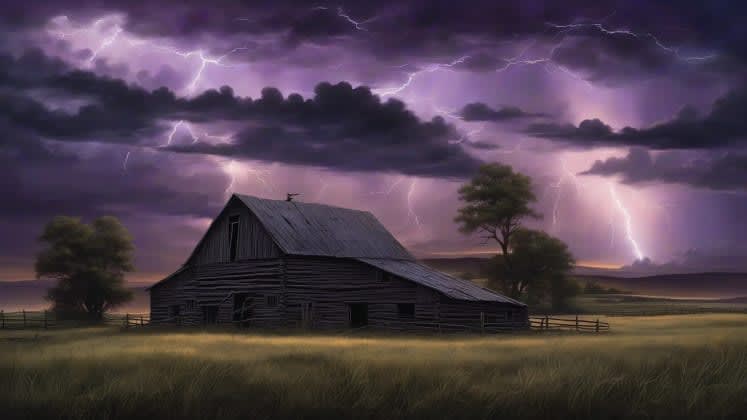Lightning Strike Probability Calculator - lightning and thunder tools
About Lightning Strike Probability Calculator lightning and thunder tools
Estimates the relative probability of a lightning strike within a given area based on thunderstorm frequency and other factors.
Formula:
N/A (Lightning strike probability is calculated using sophisticated models and datasets).
Tips:
Lightning strike probability varies significantly with geography, time of year, and local weather patterns.
Open fields, tall trees, water, and metal objects can increase the risk of lightning strikes.
During a thunderstorm, seek shelter indoors or in a hard-top vehicle.
Fun Fact:
Lightning strikes the Earth about 40 times every second, or nearly 1.4 billion times per year.
Related Article
Decoding the Fury of the Skies: A Guide to Lightning, Thunder, and Storm Safety
The brilliant flash of lightning, followed by the rumbling roar of thunder, is a dramatic display of nature's power. But while awe-inspiring, thunderstorms also pose significant hazards, demanding respect and caution.
This guide will explore the electrifying world of lightning and thunder, delving into their origins, the risks they present, and essential safety measures to protect yourself during electrical storms.
1. Lightning: A Spark of Atmospheric Energy
Lightning is a sudden electrostatic discharge that occurs within a thunderstorm, producing a bright flash of light and a loud clap of thunder.
- Charge Separation: Thunderstorms develop when warm, moist air rises rapidly, creating strong updrafts and downdrafts. Collisions between ice particles within the storm cloud cause a separation of electrical charges.
- Lightning Formation: Typically, a positive charge builds up at the top of the cloud, a negative charge accumulates in the middle, and a smaller positive charge forms near the bottom. When the electrical potential difference between these areas becomes large enough, a discharge occurs—lightning.
Types of Lightning:
- Intracloud Lightning: Occurs within the same cloud.
- Cloud-to-Cloud Lightning: Occurs between two separate storm clouds.
- Cloud-to-Ground Lightning: Occurs between a storm cloud and the ground.
2. Thunder: The Sound of Lightning's Power
Thunder is the sound produced by the rapid heating and expansion of air surrounding a lightning bolt. The air heats up so quickly (to temperatures five times hotter than the surface of the sun) that it creates a shock wave that we hear as thunder.
- Distance Estimation: Because light travels much faster than sound, you can estimate the distance to a lightning strike by counting the seconds between seeing the flash and hearing the thunder.
- Rule of Thumb: Sound travels approximately 1 kilometer in 3 seconds, or 1 mile in 5 seconds.
- Thunder Variations: The sound of thunder can vary depending on the type of lightning, the distance to the strike, and atmospheric conditions.
3. The Dangers of Lightning:
Lightning is a significant hazard, capable of:
- Electrocution: Direct strikes can be fatal.
- Fires: Lightning can ignite dry vegetation, starting wildfires.
- Power Outages: Lightning strikes can damage power lines and electrical equipment.
- Injuries: Indirect strikes, ground currents, and side flashes can also cause injuries.
4. Lightning Safety: When Thunder Roars, Go Indoors
- Seek Shelter Immediately: When thunder roars, go indoors or seek shelter in a hard-top vehicle.
- Avoid Open Areas: Stay away from open fields, tall trees, water, and metal objects, as these can attract lightning.
- 30-30 Rule: Wait at least 30 minutes after the last clap of thunder before resuming outdoor activities.
- Indoor Safety: Avoid contact with plumbing, electrical appliances, and corded phones during a thunderstorm.
- CPR and First Aid: If someone is struck by lightning, call 911 immediately and provide CPR and first aid if trained to do so.
5. Lightning Myths Debunked
- Myth: Lightning never strikes the same place twice.
- Fact: Lightning can and does strike the same place multiple times, especially tall objects.
- Myth: Rubber tires on a car protect you from lightning.
- Fact: It's the metal frame of the car that provides protection, not the tires.
6. Lightning Detection and Forecasting
- Lightning Detection Networks: Systems that use sensors to detect lightning strikes and provide real-time information about lightning activity.
- Weather Radar: Doppler radar can detect thunderstorms and the potential for lightning.
- Lightning Prediction Models: Meteorologists use computer models to predict the likelihood of lightning development.
Lightning and Thunder: A Force of Nature
Lightning and thunder are awe-inspiring phenomena that remind us of the power of nature. By understanding the science behind these events, being aware of the risks, and taking appropriate safety precautions, we can respect the forces of the skies and minimize the hazards they pose.
Some related Fun Facts...
Lightning and Thunder Fun Facts:
- Lightning can strike up to 10 miles away from the center of a thunderstorm.
- The average lightning bolt contains enough energy to power a 100-watt light bulb for over three months.
- The temperature of a lightning bolt can reach 50,000 degrees Fahrenheit (27,760 degrees Celsius).
- Lightning is one of the leading causes of weather-related deaths in the United States.
- You cannot have thunder without lightning.
- The Empire State Building is struck by lightning about 25 times per year.
- Lightning can create fulgurites, glassy tubes formed when lightning strikes sand.
- Some cultures believe that lightning is a sign of divine power or anger.
- Lightning plays a role in the Earth's nitrogen cycle by converting atmospheric nitrogen into a form that plants can use.
- Lightning is a spectacular natural phenomenon that reminds us of the power and energy of the atmosphere.
Frequently Asked Questions
Lightning and Thunder FAQ:
1. What causes lightning? A buildup of static electricity within a thunderstorm cloud, typically caused by collisions between ice particles.
2. Why does thunder occur? Thunder is the sound produced by the rapid heating and expansion of air surrounding a lightning bolt.
3. How can I estimate the distance to a lightning strike? Count the seconds between seeing the flash and hearing the thunder. Divide that number by 3 to get the approximate distance in kilometers (or by 5 for miles).
4. What are the different types of lightning? Intracloud (within the same cloud), cloud-to-cloud (between clouds), and cloud-to-ground (between a cloud and the ground).
5. What are the dangers of lightning? Electrocution, fires, power outages, and injuries from indirect strikes or ground currents.
6. What should I do during a thunderstorm? Seek immediate shelter indoors or in a hard-top vehicle. Avoid open areas, tall trees, water, and metal objects.
7. Is it safe to be in a car during a lightning storm? Yes, the metal frame of a car acts as a Faraday cage, directing the electrical current around the occupants.
8. What is the 30-30 Rule for lightning safety? Wait at least 30 minutes after the last clap of thunder before resuming outdoor activities.
9. How can I protect my home from lightning strikes? Install lightning rods, surge protectors, and unplug electronic devices during storms.
10. Where can I find lightning strike data or maps? Weather websites, apps, and lightning detection networks provide real-time lightning information.
















